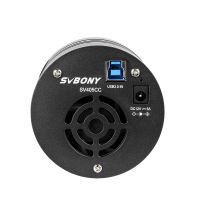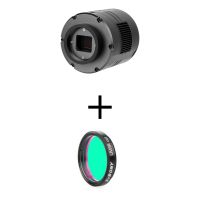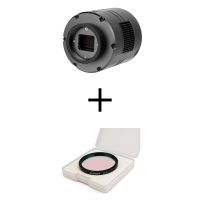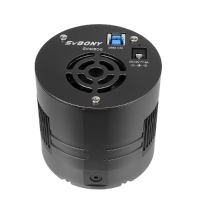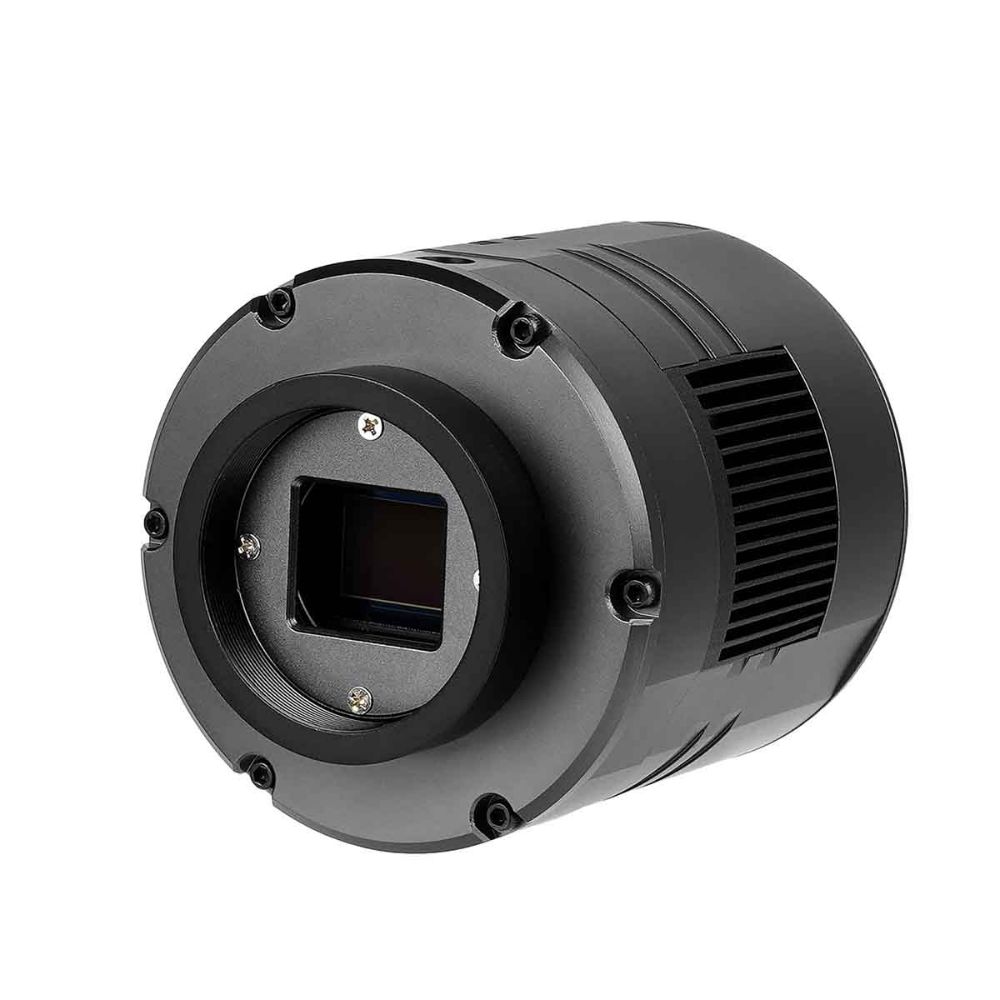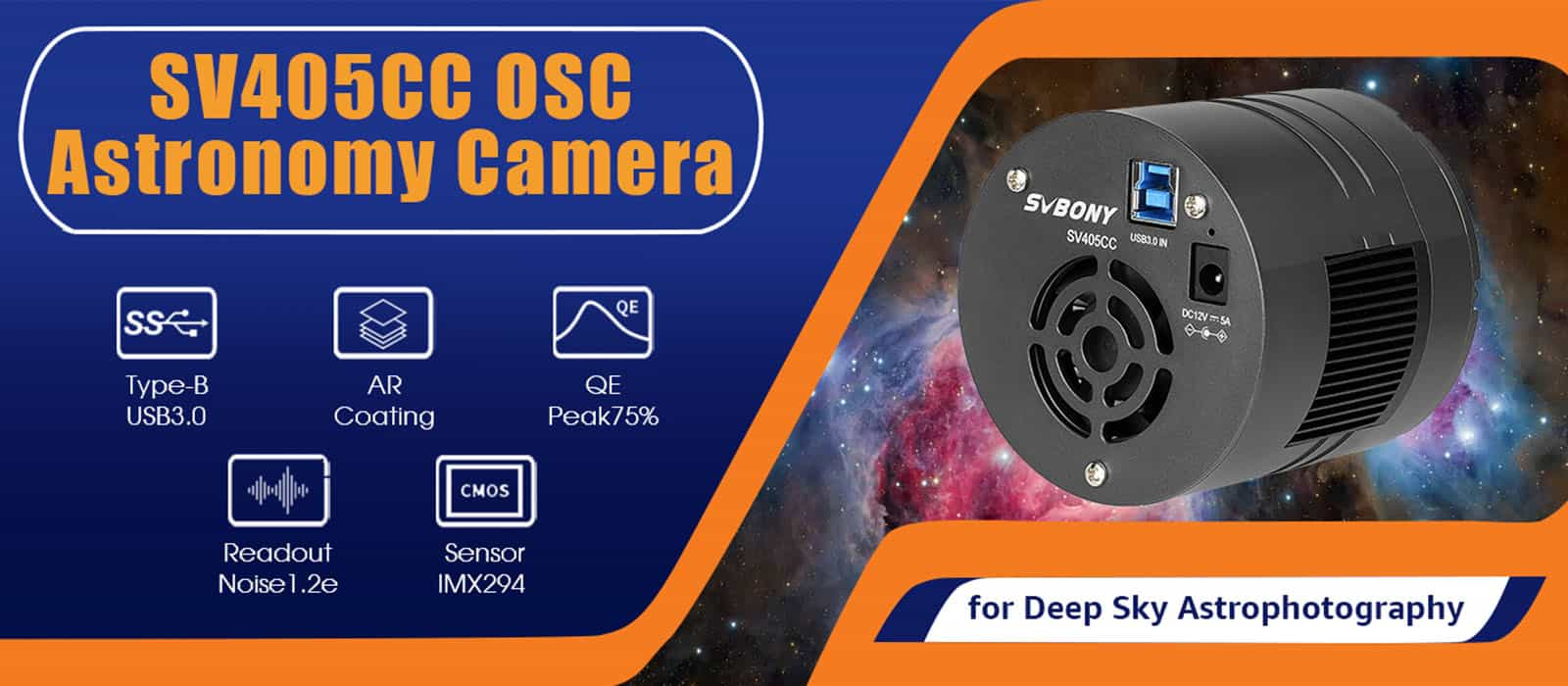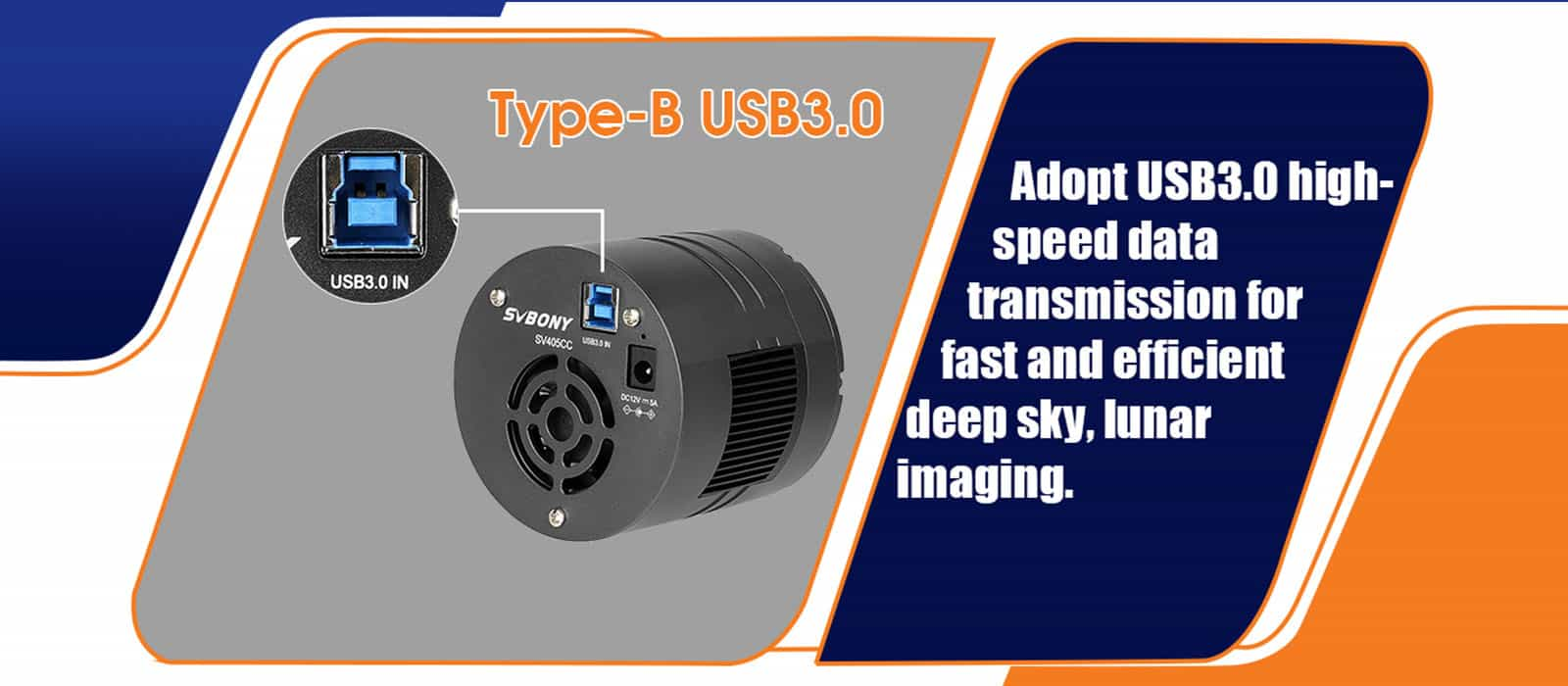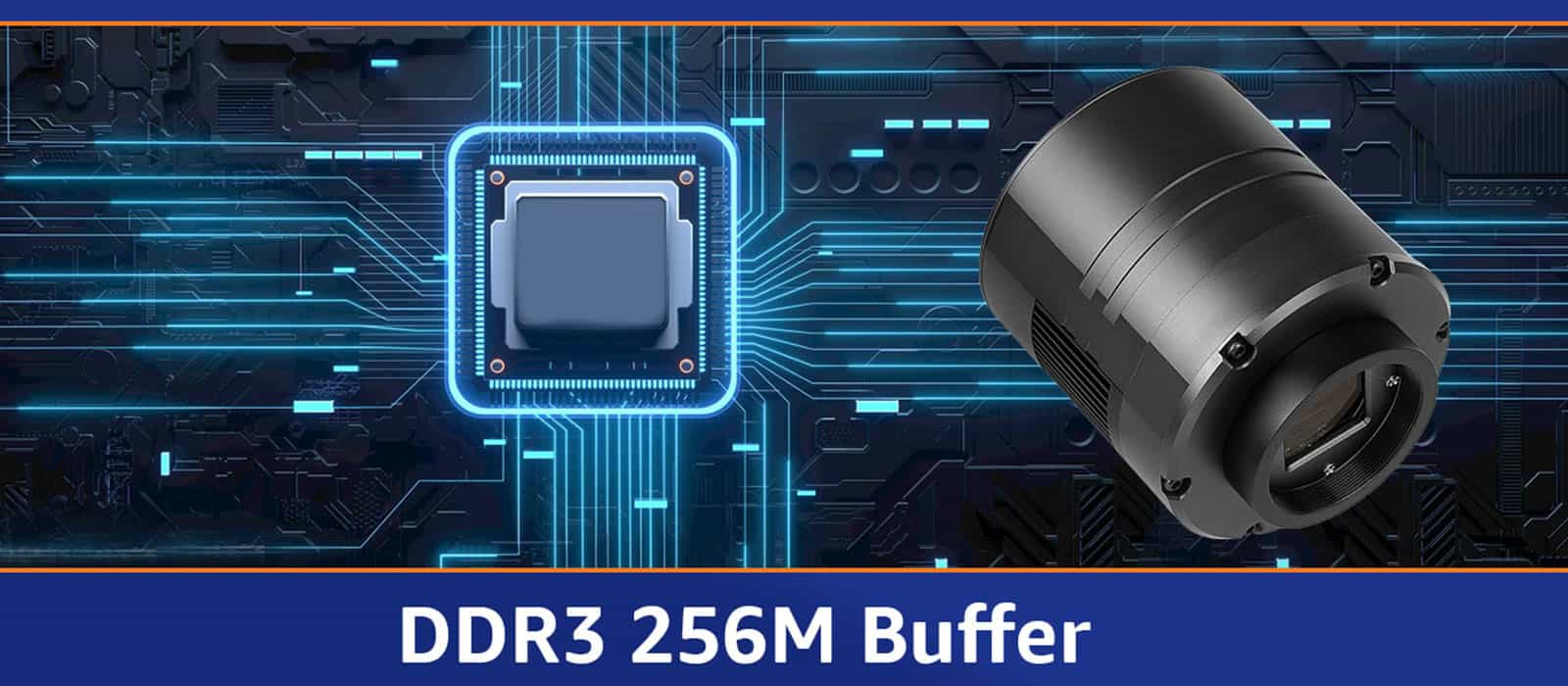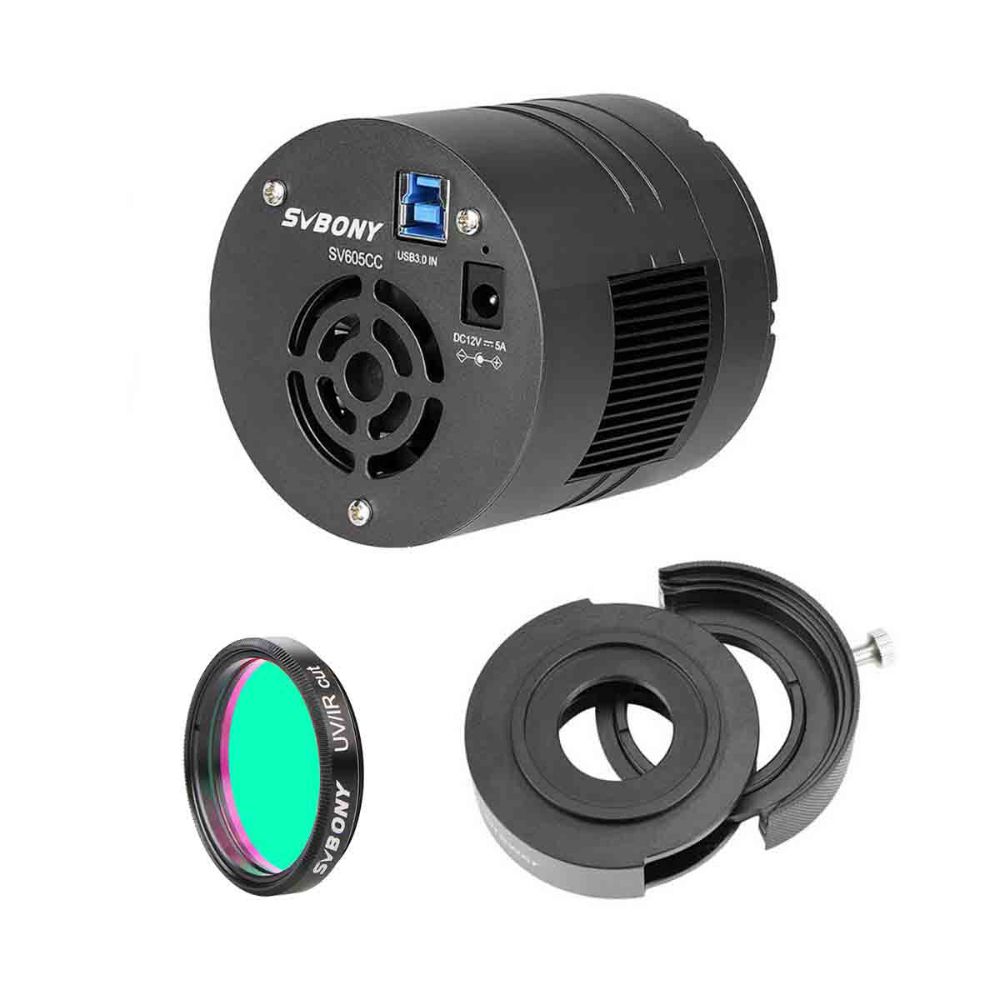- SV405CC cooled color astronomy camera for deep sky astrophotography. The deep space shooting targets are mainly nebula, galaxies, star clusters, multiple stars, etc;
- IMX294 color CMOS sensor; The IMX294 sensor adopts the 4/3 format and provides the necessary number of pixels for true 4k output at 120 frames per second;
- USB 3.0 high-speed interface; The bandwidth of up to 5GB allows the camera to run at 19 frames per second in raw8 mode and 16 frames per second in raw16 mode at full resolution of 11.7 million pixels;
- Cooling System; Thanks to the two-stage tec cooling, the camera can lower the CMOS sensor temperature to 86°F below ambient temperature, which can greatly reduce dark current generation and sensor noise even during longer exposure times;
- Support system; Compatible with Windows, Linux, Mac OS, Chrome OS and Raspberry Pi systems by running AstroDMx Capture. For Windows system. Also support Sharpcap, N.I.N.A., TheSkyX and other softwares run through ASCOM platform by using ASCOM driver;
- The Bayer pattern of the SV405CC is GRBG
In Stock
Special offers and product promotions
SV405CC OSC Astronomy Camera IMX294 for Deep Sky Astrophotography
2- Stage TEC Cooling
Cooling System: The two-stage TEC cooling, the SV405CC cooled color astronomy camera can lower the CMOS sensor temperature to 30°C Celsius below ambient temperature, which can greatly reduce dark current generation and sensor noise even during longer exposure times.
AR Coating
The coating of the protective glass increases the transmittance of the infrared band.
Type-B USB 3.0
ROI Function - Any Resolution Supported
DDR3 256M Buffer
The Image Captured With SV405CC

| SKU | F9198E | F9198F | F9198K | F9387A |
| Model | SV605MC | SV405CC | SV605CC | SC432M |
| Sensor | IMX533 | IMX294 | IMX533 | IMX432 |
| Classification | Monochrome | Color | Color | Monochrome |
| Shutter Type | Rolling Shutter | Rolling Shutter | Rolling Shutter | Global Shutter |
| Pixel Size | 3.76μm X 3.76μm | 4.63µm | 3.76μm X 3.76μm | |
| Resolution | 9MP | 11.7MP | 9MP | |
| Diagonal Length | 15.968mm | 23.2mm | 15.968mm | 17.5mm |
| USB Type | USB3.0 | USB3.0 | USB3.0 |
Great value
Bought this camera with filter drawer and dual band filter. My first experience with a dedicated camera and it's brilliant, shot the rosette nebula with the dual band using N.I.N.A. at very steady minus 5 very pleasing. Absolutely no regrets as I initially hesitated upgrading from dslr, just the ease of doing flats the next day and the quality of shorter exposures making the hobby so much more enjoyable.
Excellent Camera, very low noise, very sensitiv to low light
I am very pleased to own this camera. Very good technical data, very stable housing, everything works wonderfully. Above all, available at a very affordable price compared to other manufacturers with this chip. Highly recommended.
405cc
Excellent product well worth the money works just like they describe stays 30°below ambient temperature and takes great pictures
Great camera and great price
Have 2 of these cameras, first one has been serving me well for almost 2 years and still going, the sensor is very big 23mm in diagonal, compared to the competitors this camera is half in price, works great and has the cooler for alot less noise aswell, shipping was also fast when i chose the expedited shipping
Sv405
What a great camera. Thank you so much.
First photo all good
Thx
The best for this value
I've been using this camera for about three months, and I'm still impressed. I had no issues during that time, and the camera's performance amazed me after astromodified DSLR. Cooling works stable and has a 35°C temperature difference at 80% power. Highly recommend this camera as the most affordable cooling camera.
To sum up: I RECOMMEND.
I definitely recommend this camera for people who want to switch from a DSLR to an astronomical camera.
At the price I bought it for (around $560 on sale), the value for money is simply amazing.
I used to use a modified Canon 1100D. Now, to achieve a comparable effect, I only have to expose for 60% of the time compared to the Canon.
Even at the current promotional price of $646 compared to the ASI294MC-P camera ($999), the difference is huge and now I would also decide on the SV405CC.
The cooling works well. I am able to go down by 30°C relative to the environment. At 750 mm focal length I also did not notice more blurred stars after turning on the fan.
As for the quality of the camera itself: it looks like a solidly made camera.
Things to look out for before you decide on this camera:
- if you use Astroberry, there is an old driver that does not support HCG mode, so you will either have to change the program for collecting frames or
find a way to update the driver to the latest one. I definitely recommend N.I.N.A.
- amp glow: unfortunately this camera has it (ASI294MC-P too) but darks take care of the problem, so this is a minor drawback.
You should also remember to collect and flat-dark if your flats have a total exposure length exceeding a few seconds.
The only drawback I know about comparing to ASI294MC-P is the lack of a hub with two USB outputs.
But is this difference worth paying ~350 USD extra? You answer this question yourself. For me, absolutely not.
Absolutely love it
I would have had this a year in November and not had a problem with it even though it was dropped as my rig permanently lives outside under a cover and and some months ago we had high wind which knocked over the scope and tripod apart from a little dent any broken USB cable the camera still works perfectly and is easy to use but finding any information regarding it in English is very difficult what would definitely buy another one if needed
Very well built
Just started imaging with this dedicated astro camera hence only the 4 on image quality. I probably need to get more familiar with it and image processing. It cools very well and cooling power remains steady. I have no complaints about this at all and it is more than reasonably priced.
good value
easy to set up and use with nina, great value/budget camera. clone of asi294mc pro. no issues using nina, just follow the instructions in the manual and it takes only a few moments to set up. all of the included accessories are seemingly good quality. great image quality for the price. cooler works perfectly and cools to -10 no problem.
| Model | SV405CC |
| Sensor | IMX294 |
| CMOS Image Resolution | 4144*2822 |
| Total Pixels | 11.7 megapixel |
| Pixel Size | 4.63µm |
| Target Size | 19.2mm*13mm |
| Diagonal | 23.2mm |
| Maximum Frame Rate | 19FPS |
| Shutter Type | Rolling Shutter |
| USB Type | Type-B USB 3.0 |
| DDRIII Buffer | DDR3 256M |
| Exposure | 0.05ms-2000s |
| Readout Noise | 1.2e |
| QE Peak | 0.75 |
| Full Well | 63ke |
| ADC | 14bit |
Features
- 1. Back-illuminated sensor – improving sensitivity and reducing noise. Excellent micro-4/3 CMOS sensor with 4144x2822 (11.7 megapixel) resolution to capture fine details in astronomical objects.
- 2. With ADC 10-bit output mode, the SV405CC can run up to 19fps at 4k format when used with USB 3.0
- 3. HCG mode--When set the gain at 120 or higher, the HCG mode is automatically enabled, and reduce the read noise to even lover levels without loss the dynamic range.
- 4. Exceptuinal low-illumination performance of SNR1s:0.14 lx is realized by use of a large-size optical system and by expanding the area per pixel to 4.63um.
- 5. With AR coating, SV405CC can be obtained by shooting visible light with an IR CUT filter; infrared shooting with different filters, such as IR685, IR850.
The Real Shot Image by SV405CC Astronomy Camera


The Bundle Set of Telescopes with SV405CC by Our Clients

The Unboxing of SV405CC Astronomy Camera by Our Clients








